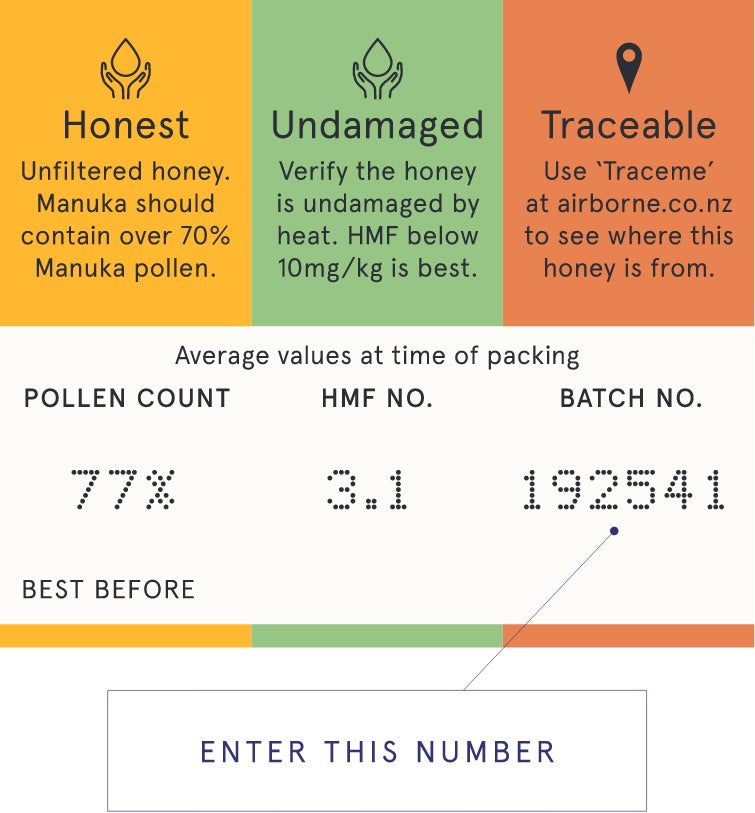Results for batch #
Verify the honey is undamaged by heat. HMF below 10mg/kg is best.
See the apiaries where the honey comes from.
The Airborne Standard

Honest
Unfiltered Honey: We measure the pollen percentage and total pollen per 10g.

Undamaged
Verifying the honey is undamaged by heat: We measure the HMF level as mg/kg.

Traceable
Scan our TraceMe QR code to check the variety, quality and origin of the honey in your jar.
Batch not found
Check the batch file number you are searching for and re-enter it below.
If you still have no luck contact us and we'll be happy to help you find the tracking data for your product.
Where to find your batch number

Our product batch numbers are printed onto the back of every label. Look for the 6 digit number.
The Airborne Standard

Honest
Unfiltered Honey: We measure the pollen percentage and total pollen per 10g.

Undamaged
Verifying the honey is undamaged by heat: We measure the HMF level as mg/kg.

Traceable
Scan our TraceMe QR code to check the variety, quality and origin of the honey in your jar.

